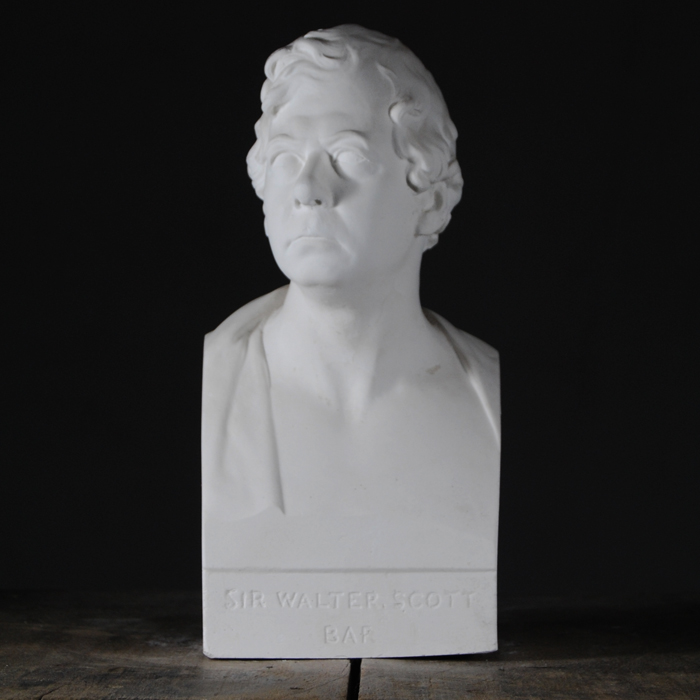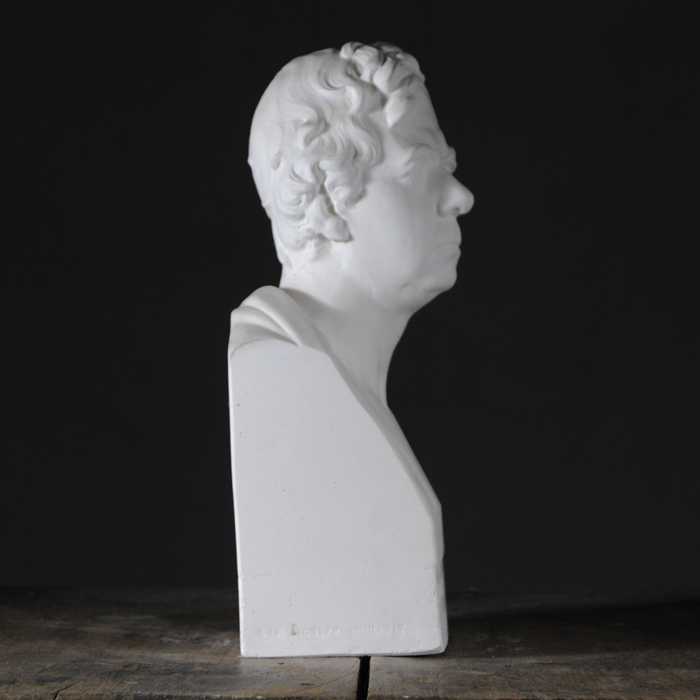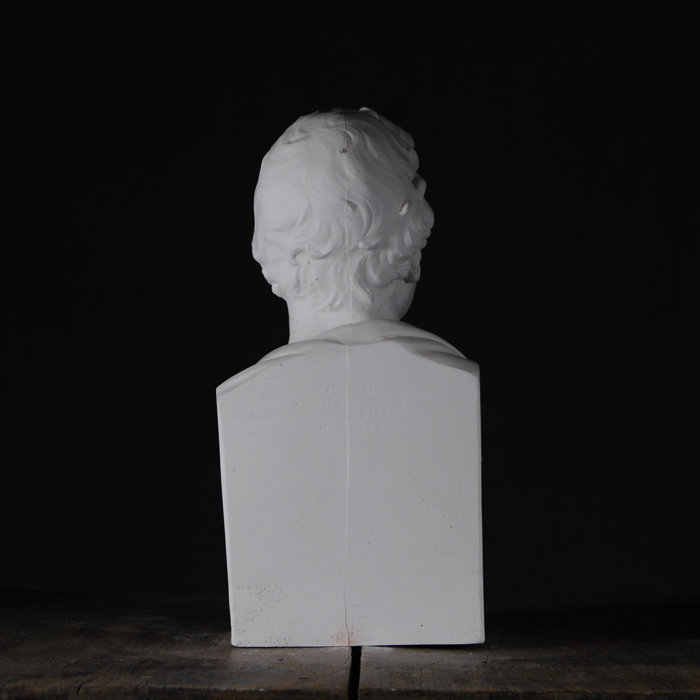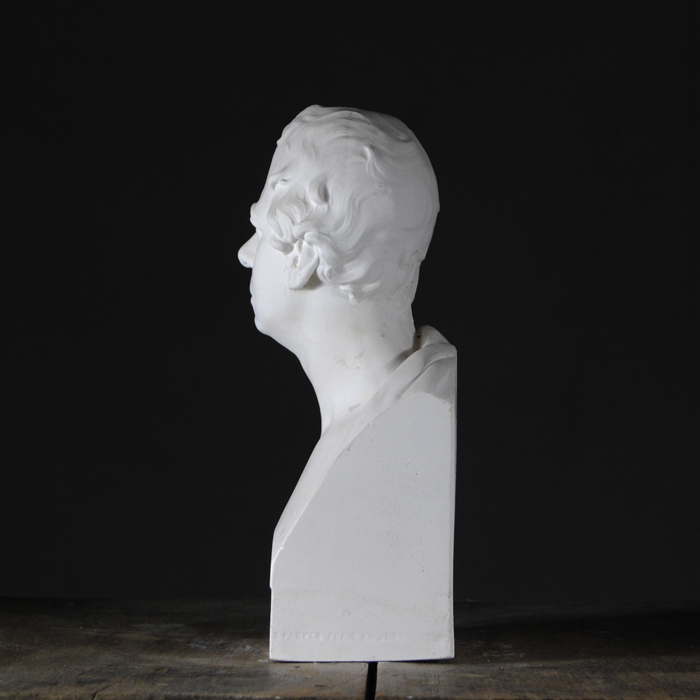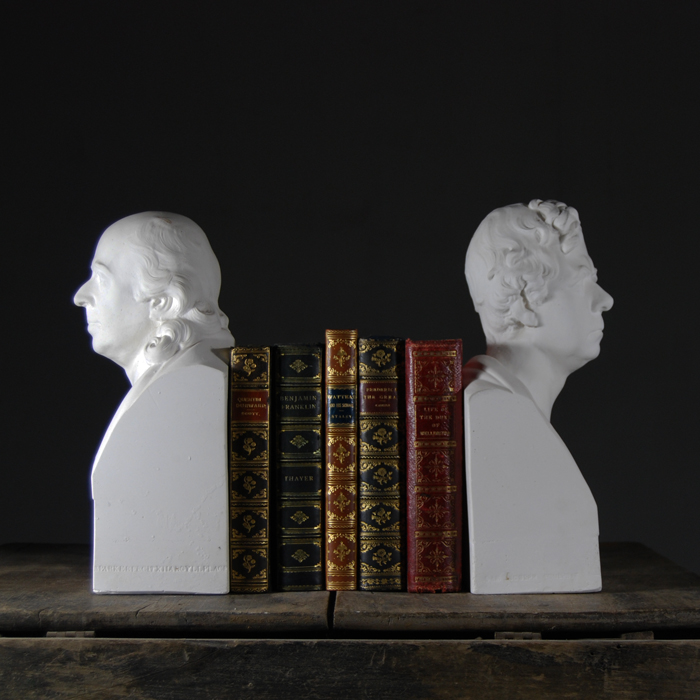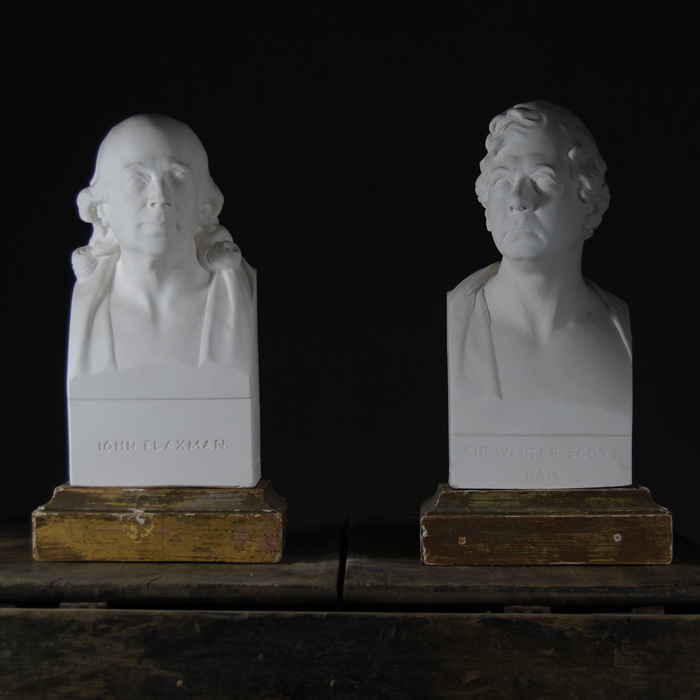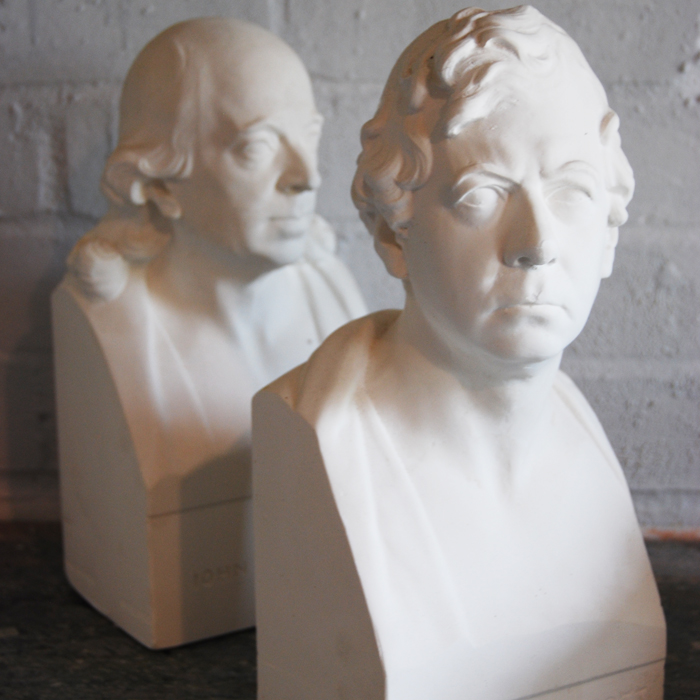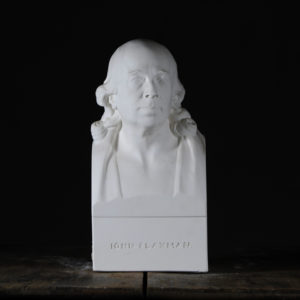No products in the basket.
A small English library plaster bust of Sir Walter Scott,
a cast of the bronze 1830 original by Samuel Joseph held at Preston Hall near Edinburgh,
modelled with tousled hair, his head turned slightly a dextra, the plinth bearing "SIR WALTER SCOTT" to the obverse, "SPARKERFECITXIIARGYLLPLACE" to one side, and "SAM JOSEPH SCULPSIT" to the other, and "PUBLISH AS THE ART DIRECT(?), LONDON, MAY X MDCCCXXX" to the reverse,
£135
In stock (can be backordered)
This bust pairs well with another by the same hand “John Flaxman” – see 44222.
The Sitter:
Sir Walter Scott, 1st Baronet FRSE (15 August 1771 – 21 September 1832) was a Scottish historical novelist, poet, playwright and historian. Many of his works remain classics of both English-language literature and of Scottish literature. Famous titles include Ivanhoe, Rob Roy, Old Mortality, The Lady of the Lake, Waverley, The Heart of Midlothian and The Bride of Lammermoor.
Although primarily remembered for his extensive literary works and his political engagement, Scott was an advocate, judge and legal administrator by profession, and throughout his career combined his writing and editing work with his daily occupation as Clerk of Session and Sheriff-Depute of Selkirkshire.
A prominent member of the Tory establishment in Edinburgh, Scott was an active member of the Highland Society, served a long term as President of the Royal Society of Edinburgh (1820–32) and was a Vice President of the Society of Antiquaries of Scotland (1827-1829).
Scott gathered the disparate strands of contemporary novel-writing techniques into his own hands and harnessed them to his deep interest in Scottish history and his knowledge of antiquarian lore. The technique of the omniscient narrator and the use of regional speech, localized settings, sophisticated character delineation, and romantic themes treated in a realistic manner were all combined by him into virtually a new literary form, the historical novel. His influence on other European and American novelists was immediate and profound, and though interest in some of his books declined somewhat in the 20th century, his reputation remains secure.
The Sculptor:
Samuel Joseph RSA (1791–1 July 1850) was a pupil of Peter Rouw, and attended the Royal Academy Schools in 1811, gaining the silver medal there in both 1811 and 1812. In 1815 he won the gold medal for “Eve Supplicating Forgiveness”. In 1823 he went to Edinburgh, becoming a founding member of the Royal Scottish Academy in 1826. During this time he taught Alexander Handyside Ritchie.
He left Edinburgh in 1829 to set up a bigger and more prestiguous studio in London.
His most famous and noted work is the statue of William Wilberforce in Westminster Abbey, created in 1838. A plaster copy of it also exists in St John’s College, Cambridge. He exhibited in the Royal Academy from 1811 to 1846, and the Royal Scottish Academy from 1827 to 1835. He was declared bankrupt in 1848 and forced to sell most of his belongings.
He died in London on 1 July 1850, leaving seven children. The Royal Academy granted a pension to his widow, which continued until her death, 13 years later. A wax portrait of Samuel Joseph by T. Smith was exhibited in 1828 at the Royal Academy.

